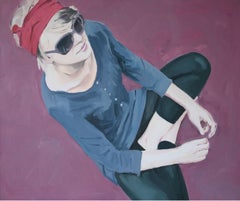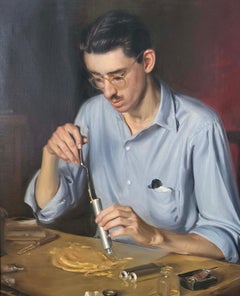
SELF PORTRAIT, MIXING PAINT
View Similar Items
Want more images or videos?
Request additional images or videos from the seller
1 of 7
Roy Gates Perham Jr. SELF PORTRAIT, MIXING PAINT1940
1940
About the Item
About the Seller
5.0
Vetted Seller
These experienced sellers undergo a comprehensive evaluation by our team of in-house experts.
Established in 1972
1stDibs seller since 2011
384 sales on 1stDibs
More From This SellerView All
- Woman with DogBy Reza AfrookhtehLocated in Los Angeles, CASize with frame: 34 x 28 Inches Reza begun studying art seriously at age 15 and was studying at the institute of art in Iran where he graduated with highest honors. He also studied...Category
Early 2000s Realist Figurative Paintings
MaterialsOil, Canvas
Price Upon Request - OVERLOOKING FLORENCELocated in Los Angeles, CALEONARDO BAZZARO "OVERLOOKING FLORENCE" OIL ON CANVAS, SIGNED ITALY, C.1920 23.5 X 19.75 Born in Milan in 1853, Leonardo Bazzaro trained with Gae...Category
1920s Post-Impressionist Figurative Paintings
MaterialsOil, Canvas
$2,125 Sale Price27% Off - Man with Yellow TieLocated in Los Angeles, CAALEXANDER KREISEL "MAN WITH YELLOW TIE" OIL ON CANVAS BOARD, SIGNED RUSSIAN-AMERICAN, C.1935 26 X 19.5 INCHES FRAMED 29.5 X 23.5 INCHES Alexander Krei...Category
1930s Expressionist Figurative Paintings
MaterialsOil, Canvas
$1,688 Sale Price24% Off - Home FireBy Yuri Martinez RamosLocated in Los Angeles, CAYURI MARTINEZ RAMOS "HOME FIRE OIL ON CANVAS, SIGNED CUBAN-AMERICAN, C.2006 20 X 16 INCHES Home Fire" brings me back to my childhood home when my grandpa visited us every day smoking his pipe and conversing good moments. Yuri Martinez Ramos was born in Havana, Cuba on November 24, 1964. He studied at the Elemental School of Plastic Arts from 1975 – 1979 and the National School of the Arts from 1979 – 1983. Martinez’ figurative paintings have been compared to Botero because of his satirical social commentary. His style, however, is uniquely his own with typically vibrant Latin colors and use of expressive magical realism. His paintings tell his story and the story of the Cuban dilemma. Martinez was granted permission by the US Justice Department after much effort with Cuban authorities to come to the US with his family and pursue his career outside Cuba. He now lives and works in Texas. Papillon Gallery...Category
Early 2000s Surrealist Figurative Paintings
MaterialsOil, Canvas
$1,688 Sale Price24% Off - LADY WITH PICK FANLocated in Los Angeles, CABiography from the niece of the artist from during his lifetime. Paintings acquired from the artist.s estate. Max Turner 1925 - 2019 Max Lamar Turner Painter, Sculptor, Teacher and Author. Max Turner was born in Omaha, Nebraska on July 28, 1925. His father was Lance Howard Turner and his mother Mary Irene Turner. In 1927, his family moved to Bingham Canyon, Utah where Max's father extracted copper from a creek that he had diverted to pass through his garage. The town was located in a narrow canyon on the eastern face of the Oquirrh Mountains. In 1938, when Max was 13, his family moved to Midvale, Utah. After completing high school, Max went to work laying rail until he was inducted into the U.S. Navy to serve during W.W. II. There he took an aptitude test and was initially assigned to the medical corp., later transferring to the dental unit. Max was stationed at Port Hueneme, Ventura County, California through the end of the war. When he was discharged in 1946, he remained in Southern California, living in the Los Angeles area. He met a man named Larry Torres and they formed a partnership to do silk screen work primarily for the Colby Poster Printing Company. This lasted about 10 years until the Colby building caught fire and burned down. In 1958, Max began working for Slade Novelty company that made doll parts using a product called plastisol. A year later, Max began producing plastic parts through his own business. One day, a couple of kids brought in a shrunken skull they had made and asked Max if he could reproduce it. Max said he could and he looked around for a business to work with for this task. He ultimately decided he could create his own machine shop to make molds. As a result, Max purchased a lathe, drill press, grinder and other tools to create his own machine shop and went into business making molds. He built a clientele and in 1973, he moved his machine shop to Glendale, California. Painter, Sculptor, Teacher and Author: Max recalls the day when his interest in art took a new direction. He happened to be in a paint store to purchase some supplies when he saw a card posted on a wall that read, "Come paint with Connie Marlo". Max had been interested in art since his youth and he was frequently impressed with paintings displayed by local artists at various community events. Consequently, he decided to go to Connie's Saturday morning art class at a studio on North La Brea Avenue (between Sunset and Hollywood) in Los Angeles. But, as fate would have it, he immediately took a detour from this class when he found a piece of paper on the floor of the studio referencing another art class dealing with compositions, patterns, rhythms and color harmony. The instructor's name was Hal Reed, a former art student of the Russian/American Master, Nicolai Fechin. Hal owned the building (previously the Will Foster Studio) and had founded the Art League of Los Angeles. When Max found Hal, he asked Hal if he could join his class. Hal said "No, the class was full" but he said Max could monitor the class in the back of the classroom. Max took him up on the offer and began observing the weekly class. During the class, Hal told his students that they should practice what they were learning by going to "live model" classes. Max began attending these classes where he learned how to draw figures. After a few months, Hal and Max became good friends. Hal was so impressed with Max's work that he offered Max the opportunity to teach at another location that Hal was opening in the San Fernando Valley. Max accepted the offer and began teaching his own art class. For Max, it was a quick jump from learning to teaching. Max then found that several of his students had to commute to his art class from the west end of the "Valley". To better serve this group of students, Max decided to relocate to another studio in Calabasas. Max continued teaching, and at this time he was producing very impressive portraits, both oil paintings and charcoal drawings from live models (Max never worked from photos). Max demonstrated real talent, and the style of his drawings and paintings were being compared to those of Nicolai Fechin. And, like Fechin, Max also had an interest in sculpting. One day, Max decided to design and cast a bronze owl sculpture to put in his Calabasas Fine Art Gallery. Later, someone approached Max when he was at the foundry and asked him about his success selling the owl sculpture. The individual who asked this question was convinced that there was a broader market for these sculptures and he ordered a dozen of the owl sculptures from Max. This encouraged Max to do more castings. Some of the new castings were antique sculptures he found and reproduced. As this new business grew, he decided to establish his own foundry, employing up to 15 workers. The business continued for many years, up until the late 1990's when Max got tired of the foundry business and sold it. Max, who was now in his 70's, decided to move on to his next venture as an artist, dedicating himself to doing the actual sculpting of original art. He loved the creativity of sculpting and he had his sculptures cast at local foundries, ironically the same ones that used to be his competition. Max was now fully engaged in his new artistic direction and, over time, he produced a large body of work. He created very impressive sculptures, including about 100 full-size sculptures. He sold some of these to high-end clientele, the Foundry at SLS Las Vegas, and to Hollywood studios. Even though Max now seemed to be totally in his element, he somehow also found time to continue to teach painting classes at the California Art Institute in Westlake Village in Los Angeles. At the institute, he specialized in figure work. Max continued to draw, paint and teach, but he says he stopped sculpting when he turned 90. Max produced four books showcasing his drawings and paintings. The first is "Faces, The Drawings of Max Turner", copyright 2000, that showcases nearly 100 of his portrait drawings. Within the "Acknowledgements" section, he lists Hal Reed and Joseph Nordmann, two former students of Nicolai Fechin. In 2006, Max produced his second book titled "Figures and Faces", reflecting not only portraits but also figure drawings and paintings. It is a wonderful book of Max's work, but it is currently difficult to find. The third book is titled "Faces 2, The Paintings and Drawings of Max Turner", copyright 2009, which includes 75 portrait paintings and drawings. In the "Preface" of this book, Max describes growing up in a small and isolated mining town during the Great Depression. He states that as a kid, he had little exposure of any culture or view of what the rest of the world was like. His neighbor was the trash collector and Max would sometimes go through his truck looking for anything of value. Among other things, he found magazines like Cosmopolitan, Good Housekeeping and Red Book, with covers that frequently showed drawings or paintings of faces. Max states that these images were the very first source of inspiration for him. He says that he began looking more carefully at people's faces and if they had character, he would draw them. By drawing them, Max says that he was making them part of his world, his world of "Faces". In 2018, Max published his newest book showcasing his drawings and paintings. It is titled "Max Turner's Figure Sketches". This softbound book includes 76 pages and over 120 drawings and paintings. In the Introduction, Max explains "I have found that when approaching the figure, one should begin with the gesture. After having captured the essence or feeling of the pose, one can then proceed to build on it." The figure sketches in this wonderful book reflect a Master's work that consistently captures the "gesture"-showing the emotion, movement and expression. Two more books are on the horizon for Max, both dealing with his passion for sculpting. His first, "The Sculpture of Max Turner" is a compilation of his commercial and noncommercial pieces throughout his career. The second, "Terra Cotta Sculpture by Max Turner" is a complete collection of figures done at the California Art Institute. These much anticipated books should be out later in 2018. Max now considers himself primarily a sculptor. But others in the art world are more than impressed with his drawings and paintings as well. His portraits are often described as having a Fechin-esque appearance, referring to the style of Nicolai Fechin. When Max observed those first art classes given by Hal Reed, it should be noted that Hal had previously been a student of the Russian/American Master Nicolai Fechin in the early to mid-1950's. In fact, Hal was a student in the last art class that Fechin taught before he unexpectedly died in 1955. Hal was so strongly influenced by Fechin that he later produced two 30-minute art instruction videos as part his Art Video Productions wherein he specifically described Fechin techniques that he learned in Fechin's class. The Fechin style and techniques were in play when Max later met Hal. Over the years, many of Max's art students, art collectors, gallery owners, as well as the Director of the Monterey Museum of Art have commented on the Fechin-esque qualities of Max's wonderful charcoal drawings and paintings. So, while Max may consider himself primarily a sculptor, his drawings and paintings are also impressive and very much sought after. When Nicolai Fechin died in 1955, three of the nine students in his last art class became life-long friends. Max subsequently became friends with not only Hal Reed, but also with prior Fechin students Joseph Nordmann and Albert Londraville...Category
1990s Modern Figurative Paintings
MaterialsOil, Canvas
$450 Sale Price64% Off - BLONDE WITH ART DECO NECKLACELocated in Los Angeles, CABiography from the niece of the artist from during his lifetime. Paintings acquired from the artist.s estate. Max Turner 1925 - 2019 Max Lamar Turner Painter, Sculptor, Teacher and Author. Max Turner was born in Omaha, Nebraska on July 28, 1925. His father was Lance Howard Turner and his mother Mary Irene Turner. In 1927, his family moved to Bingham Canyon, Utah where Max's father extracted copper from a creek that he had diverted to pass through his garage. The town was located in a narrow canyon on the eastern face of the Oquirrh Mountains. In 1938, when Max was 13, his family moved to Midvale, Utah. After completing high school, Max went to work laying rail until he was inducted into the U.S. Navy to serve during W.W. II. There he took an aptitude test and was initially assigned to the medical corp., later transferring to the dental unit. Max was stationed at Port Hueneme, Ventura County, California through the end of the war. When he was discharged in 1946, he remained in Southern California, living in the Los Angeles area. He met a man named Larry Torres and they formed a partnership to do silk screen work primarily for the Colby Poster Printing Company. This lasted about 10 years until the Colby building caught fire and burned down. In 1958, Max began working for Slade Novelty company that made doll parts using a product called plastisol. A year later, Max began producing plastic parts through his own business. One day, a couple of kids brought in a shrunken skull they had made and asked Max if he could reproduce it. Max said he could and he looked around for a business to work with for this task. He ultimately decided he could create his own machine shop to make molds. As a result, Max purchased a lathe, drill press, grinder and other tools to create his own machine shop and went into business making molds. He built a clientele and in 1973, he moved his machine shop to Glendale, California. Painter, Sculptor, Teacher and Author: Max recalls the day when his interest in art took a new direction. He happened to be in a paint store to purchase some supplies when he saw a card posted on a wall that read, "Come paint with Connie Marlo". Max had been interested in art since his youth and he was frequently impressed with paintings displayed by local artists at various community events. Consequently, he decided to go to Connie's Saturday morning art class at a studio on North La Brea Avenue (between Sunset and Hollywood) in Los Angeles. But, as fate would have it, he immediately took a detour from this class when he found a piece of paper on the floor of the studio referencing another art class dealing with compositions, patterns, rhythms and color harmony. The instructor's name was Hal Reed, a former art student of the Russian/American Master, Nicolai Fechin. Hal owned the building (previously the Will Foster Studio) and had founded the Art League of Los Angeles. When Max found Hal, he asked Hal if he could join his class. Hal said "No, the class was full" but he said Max could monitor the class in the back of the classroom. Max took him up on the offer and began observing the weekly class. During the class, Hal told his students that they should practice what they were learning by going to "live model" classes. Max began attending these classes where he learned how to draw figures. After a few months, Hal and Max became good friends. Hal was so impressed with Max's work that he offered Max the opportunity to teach at another location that Hal was opening in the San Fernando Valley. Max accepted the offer and began teaching his own art class. For Max, it was a quick jump from learning to teaching. Max then found that several of his students had to commute to his art class from the west end of the "Valley". To better serve this group of students, Max decided to relocate to another studio in Calabasas. Max continued teaching, and at this time he was producing very impressive portraits, both oil paintings and charcoal drawings from live models (Max never worked from photos). Max demonstrated real talent, and the style of his drawings and paintings were being compared to those of Nicolai Fechin. And, like Fechin, Max also had an interest in sculpting. One day, Max decided to design and cast a bronze owl sculpture to put in his Calabasas Fine Art Gallery. Later, someone approached Max when he was at the foundry and asked him about his success selling the owl sculpture. The individual who asked this question was convinced that there was a broader market for these sculptures and he ordered a dozen of the owl sculptures from Max. This encouraged Max to do more castings. Some of the new castings were antique sculptures he found and reproduced. As this new business grew, he decided to establish his own foundry, employing up to 15 workers. The business continued for many years, up until the late 1990's when Max got tired of the foundry business and sold it. Max, who was now in his 70's, decided to move on to his next venture as an artist, dedicating himself to doing the actual sculpting of original art. He loved the creativity of sculpting and he had his sculptures cast at local foundries, ironically the same ones that used to be his competition. Max was now fully engaged in his new artistic direction and, over time, he produced a large body of work. He created very impressive sculptures, including about 100 full-size sculptures. He sold some of these to high-end clientele, the Foundry at SLS Las Vegas, and to Hollywood studios. Even though Max now seemed to be totally in his element, he somehow also found time to continue to teach painting classes at the California Art Institute in Westlake Village in Los Angeles. At the institute, he specialized in figure work. Max continued to draw, paint and teach, but he says he stopped sculpting when he turned 90. Max produced four books showcasing his drawings and paintings. The first is "Faces, The Drawings of Max Turner", copyright 2000, that showcases nearly 100 of his portrait drawings. Within the "Acknowledgements" section, he lists Hal Reed and Joseph Nordmann, two former students of Nicolai Fechin. In 2006, Max produced his second book titled "Figures and Faces", reflecting not only portraits but also figure drawings and paintings. It is a wonderful book of Max's work, but it is currently difficult to find. The third book is titled "Faces 2, The Paintings and Drawings of Max Turner", copyright 2009, which includes 75 portrait paintings and drawings. In the "Preface" of this book, Max describes growing up in a small and isolated mining town during the Great Depression. He states that as a kid, he had little exposure of any culture or view of what the rest of the world was like. His neighbor was the trash collector and Max would sometimes go through his truck looking for anything of value. Among other things, he found magazines like Cosmopolitan, Good Housekeeping and Red Book, with covers that frequently showed drawings or paintings of faces. Max states that these images were the very first source of inspiration for him. He says that he began looking more carefully at people's faces and if they had character, he would draw them. By drawing them, Max says that he was making them part of his world, his world of "Faces". In 2018, Max published his newest book showcasing his drawings and paintings. It is titled "Max Turner's Figure Sketches". This softbound book includes 76 pages and over 120 drawings and paintings. In the Introduction, Max explains "I have found that when approaching the figure, one should begin with the gesture. After having captured the essence or feeling of the pose, one can then proceed to build on it." The figure sketches in this wonderful book reflect a Master's work that consistently captures the "gesture"-showing the emotion, movement and expression. Two more books are on the horizon for Max, both dealing with his passion for sculpting. His first, "The Sculpture of Max Turner" is a compilation of his commercial and noncommercial pieces throughout his career. The second, "Terra Cotta Sculpture by Max Turner" is a complete collection of figures done at the California Art Institute. These much anticipated books should be out later in 2018. Max now considers himself primarily a sculptor. But others in the art world are more than impressed with his drawings and paintings as well. His portraits are often described as having a Fechin-esque appearance, referring to the style of Nicolai Fechin. When Max observed those first art classes given by Hal Reed, it should be noted that Hal had previously been a student of the Russian/American Master Nicolai Fechin in the early to mid-1950's. In fact, Hal was a student in the last art class that Fechin taught before he unexpectedly died in 1955. Hal was so strongly influenced by Fechin that he later produced two 30-minute art instruction videos as part his Art Video Productions wherein he specifically described Fechin techniques that he learned in Fechin's class. The Fechin style and techniques were in play when Max later met Hal. Over the years, many of Max's art students, art collectors, gallery owners, as well as the Director of the Monterey Museum of Art have commented on the Fechin-esque qualities of Max's wonderful charcoal drawings and paintings. So, while Max may consider himself primarily a sculptor, his drawings and paintings are also impressive and very much sought after. When Nicolai Fechin died in 1955, three of the nine students in his last art class became life-long friends. Max subsequently became friends with not only Hal Reed, but also with prior Fechin students Joseph Nordmann and Albert Londraville...Category
1990s Modern Figurative Paintings
MaterialsOil, Canvas
$650 Sale Price48% Off
You May Also Like
- [Bruce Sargeant (1898-1938)] Man from BelowBy Mark BeardLocated in New York, NYOil on canvas Signed in red, u.l. 10 x 8 inches, canvas size 12.75 x 10.75 inches in black painted wood frame This artwork is offered by ClampArt, located in New York City. “Bruce...Category
21st Century and Contemporary Realist Portrait Paintings
MaterialsOil, Canvas
- Red Bandana - XXI Century, Contemporary Figurative Oil Painting, PortraitBy Tomasz KozlowskiLocated in Warsaw, PLTomasz Kozlowski is a Polish artist, born in 1983 in Piotrkow Trybunalski, He lives and works in Lodz. He studied at the faculty of textiles and fashion of the Fine Arts School in Lo...Category
21st Century and Contemporary Realist Figurative Paintings
MaterialsCanvas, Oil
- Omnicient (oil painting grey monochrome vintage old man beard portrait nostalgiaBy Rudolf KosowLocated in Quebec, Quebeckeywords; surrealism, portrait, oil painting, earth tones, figurative painting, strangeness, contemporary surrealistic, unsettling, contemporary figurative painting, dreams, symbolic...Category
2010s Realist Figurative Paintings
MaterialsOil, Canvas
- Mr. L (oil painting monochrome vintage old man beard portrait nostalgia, hat)By Rudolf KosowLocated in Quebec, Quebeckeywords; surrealism, portrait, oil painting, earth tones, figurative painting, strangeness, contemporary surrealistic, unsettling, contemporary figurative painting, dreams, symbolic...Category
2010s Realist Portrait Paintings
MaterialsCanvas, Oil
- Moments of Reflection Depicting a Woman Sitting by the Fire, Original Oil PaintBy Sam UhrdinLocated in Stockholm, SEWe are pleased to present a captivating painting by the artist Sam Uhrdin (1886-1964). This beautiful artwork depicts a woman from Dalarna, sitting in front of a warm, glowing fire. The entire painting is bathed in a soft, radiant light, particularly illuminating her face and traditional white/red attire. The woman appears contemplative, lost in thought, perhaps thinking of someone dear to her heart. She is depicted in a kitchen, taking a moment to relax after a day's chores in her home. Sam Uhrdin's artistic journey began in the early 1900s, he traveled to Stockholm in 1903 to further continue his studies in painting. He worked as a painter during the day and attended various evening schools in the evenings. In 1906, he journeyed to America to work as a sign painter, but he mainly ended up working as an upholsterer. Returning to Leksand in 1909 via London and Paris, his artistic talent gained recognition, and with the help of some patrons, he began studying at the Royal Academy of Fine Arts in 1911, occasionally attending Althin's painting school in Stockholm. Financial circumstances cut his study time short, and his skill as a portrait painter earned him numerous portrait commissions, which further occupied his time. In 1921, Uhrdin received a scholarship from the Royal Academy, enabling him to embark on a study trip in 1922 to the Netherlands, Belgium, and France, which he had to cut short due to his wife's illness. He later visited places like Spain and Portugal. Uhrdin's breakthrough came with his portrait of the former Prime Minister Nils Edén, which he executed in 1919. In 1921, he portrayed the participants of the Swedish Academy. Among other representatives of official Sweden captured by Uhrdin were Gustav V, Manne Siegbahn, Ludvig Stavenow, and bishops Gottfrid and Einar Billing. In 1932, he held a solo exhibition at Konstnärshuset in Stockholm, and he participated in various exhibitions, including the Swedish Artists' Association in Stockholm in 1917, Swedish Art at Valand-Chalmers in Gothenburg in 1923, Dalarna Artists displayed at Liljevalchs Konsthall in 1936, and the National Museum's traveling exhibition "Barnet i konsten" (Children in Art...Category
1940s Realist Portrait Paintings
MaterialsCanvas, Oil
- Italian Realist painter - Late 19th century figure painting - Dancing LadyLocated in Varmo, ITItalian painter (late 19th century) - The Spanish dancer. 71 x 60.5cm. Antique oil painting on canvas, without frame. Condition report: Painting subjected to relining. Good state ...Category
Late 19th Century Realist Portrait Paintings
MaterialsCanvas, Oil
$1,538 Sale Price22% OffFree Shipping
Recently Viewed
View AllMore Ways To Browse
Girl On Chair
Vintage Paintbrushes
Vintage Paintbrush
19th Century Painting Atelier
Hamptons Art Vintage
Hawaiian Garden
Girl Reading Painting
Taos Indian
Norman Young
Beach Illustration Vintage
Luxury Pens
Used Touring Vans
Beach Vintage Illustration
Tool Posters
William Newport
Arte Masks
Abend Gallery
Casa De Barcelona
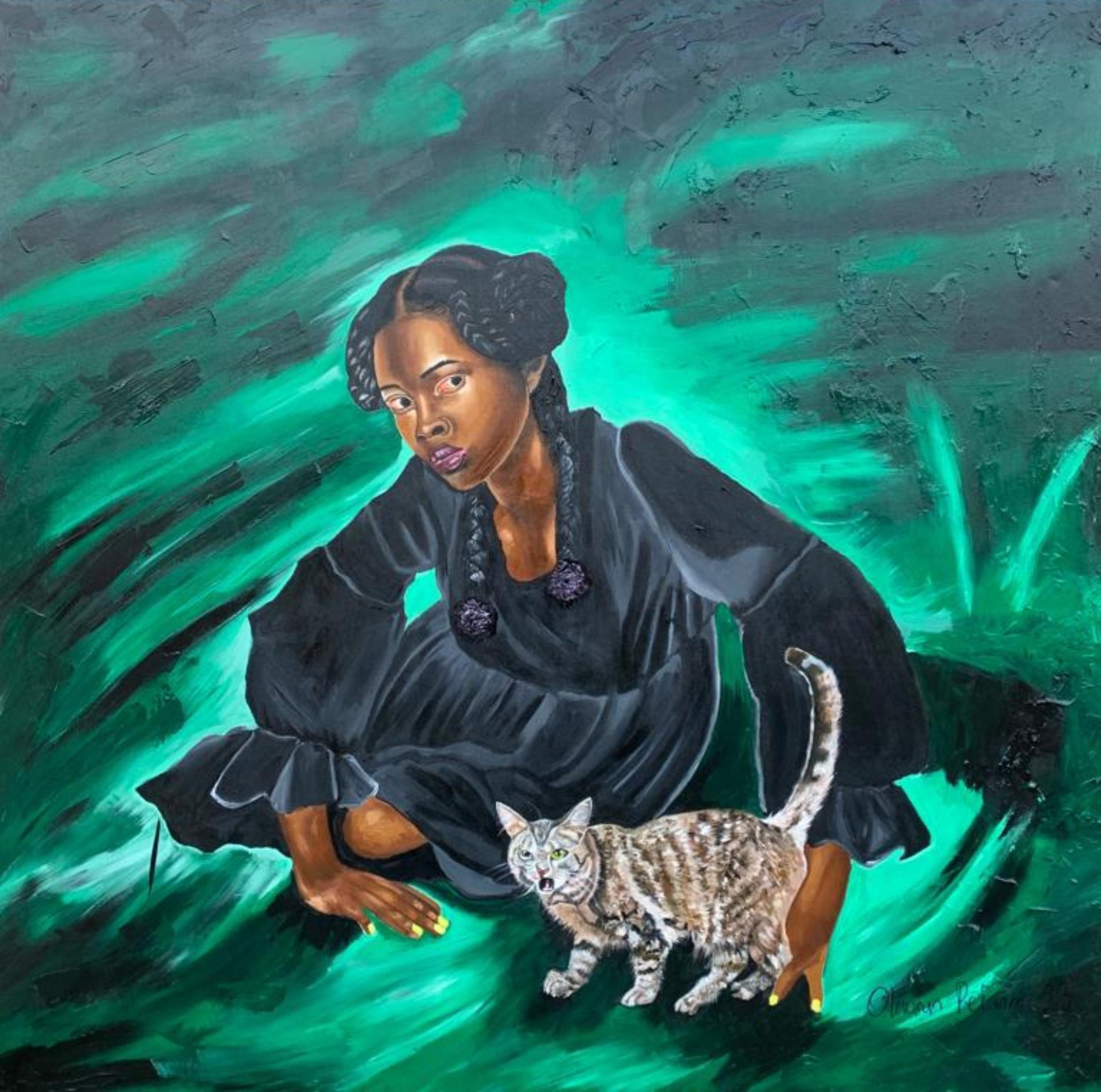
![[Bruce Sargeant (1898-1938)] Man from Below](https://a.1stdibscdn.com/mark-beard-paintings-bruce-sargeant-1898-1938-man-from-below-for-sale/a_9323/a_28835811527269100919/Sargeant_Man_From_Below_980_master.jpg)
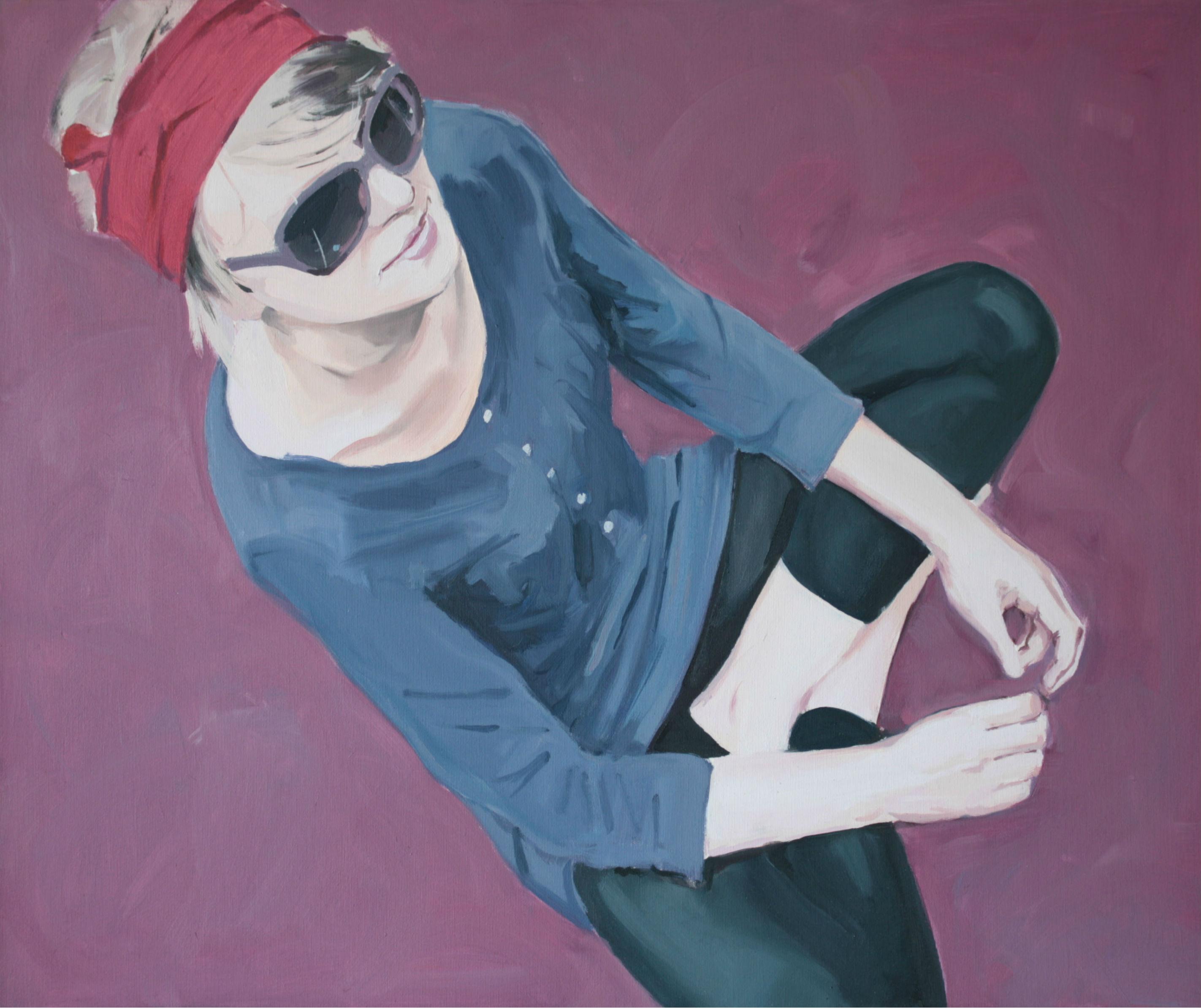
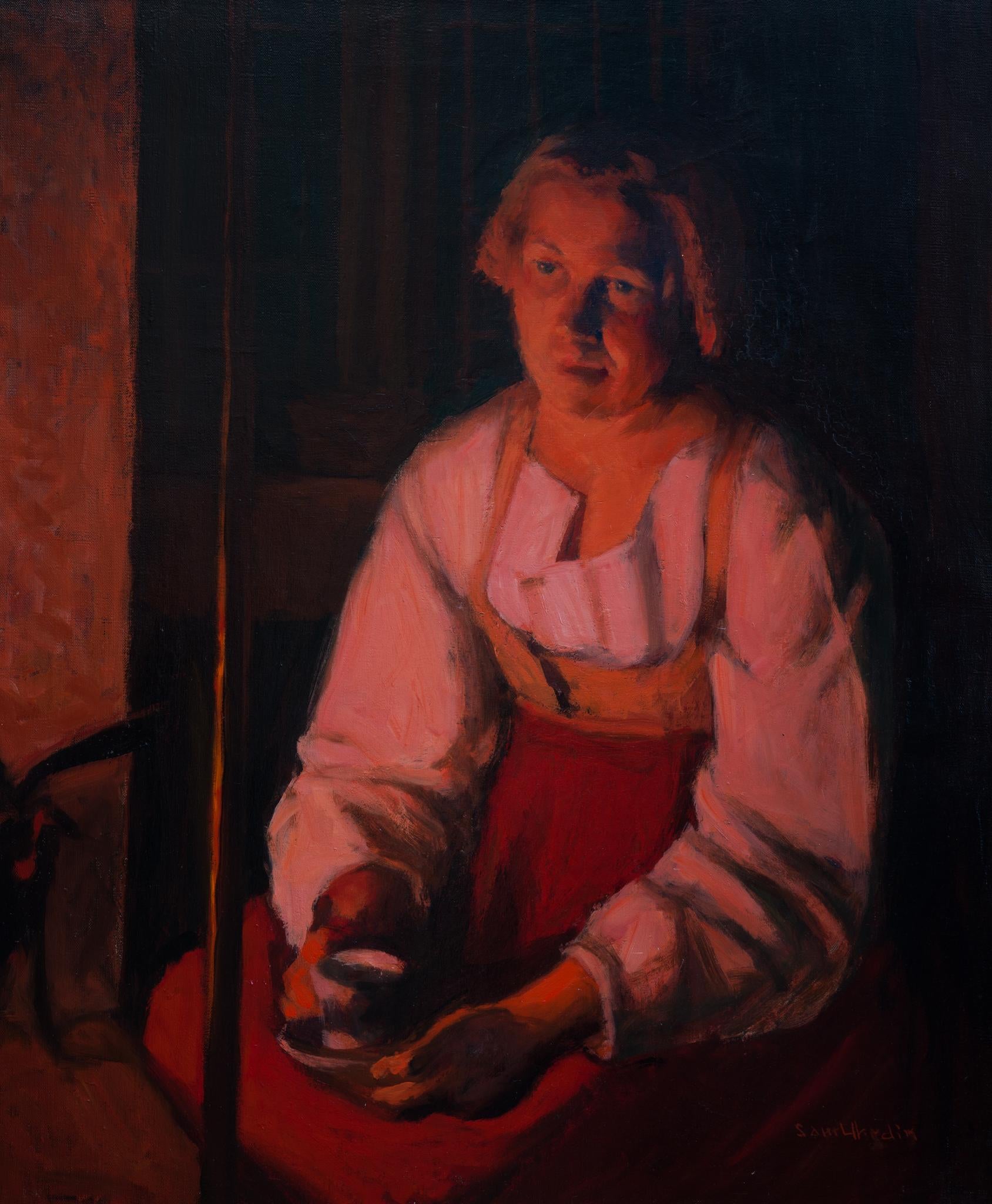

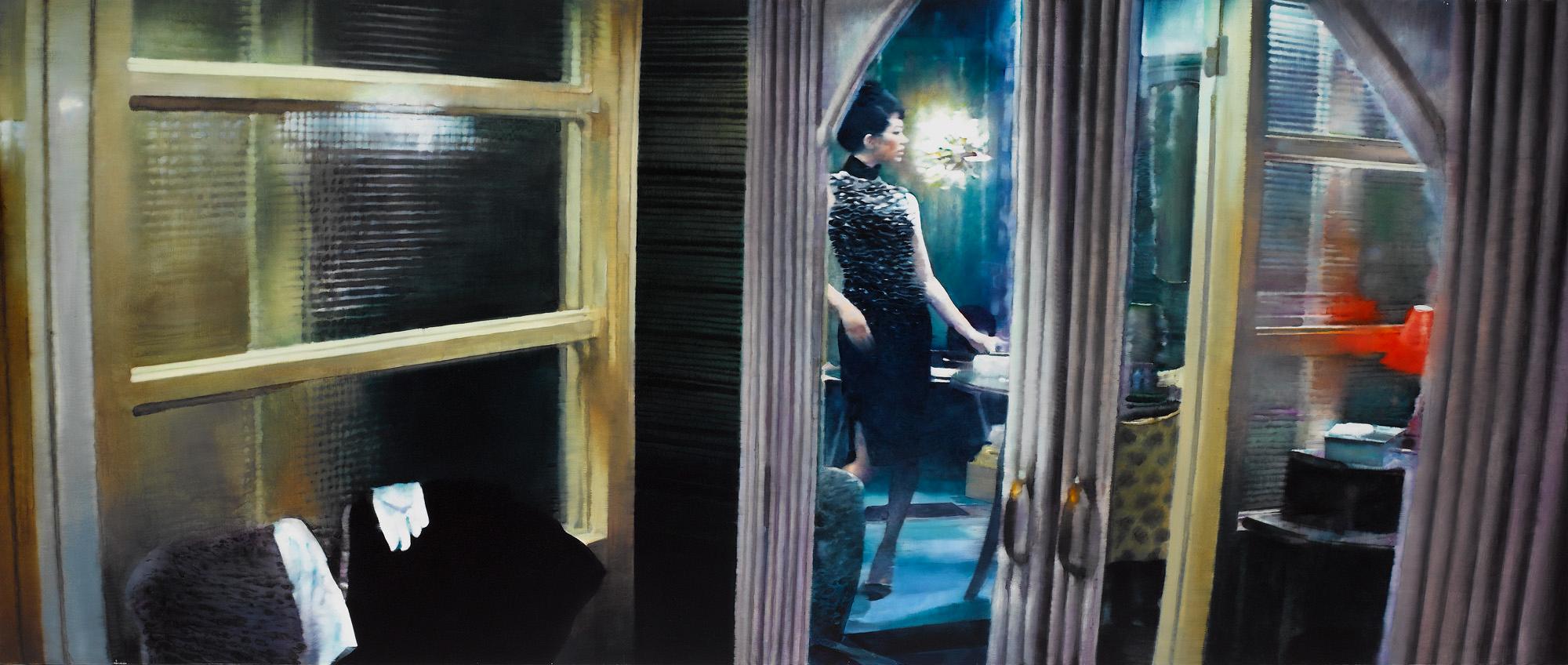
![[Bruce Sargeant (1898-1938)] Five Gymnasts in Training](https://a.1stdibscdn.com/mark-beard-paintings-bruce-sargeant-1898-1938-five-gymnasts-in-training-for-sale/a_9323/a_34005411539182323410/04_Five_Gymnasts_in_Training_980_master.jpg)
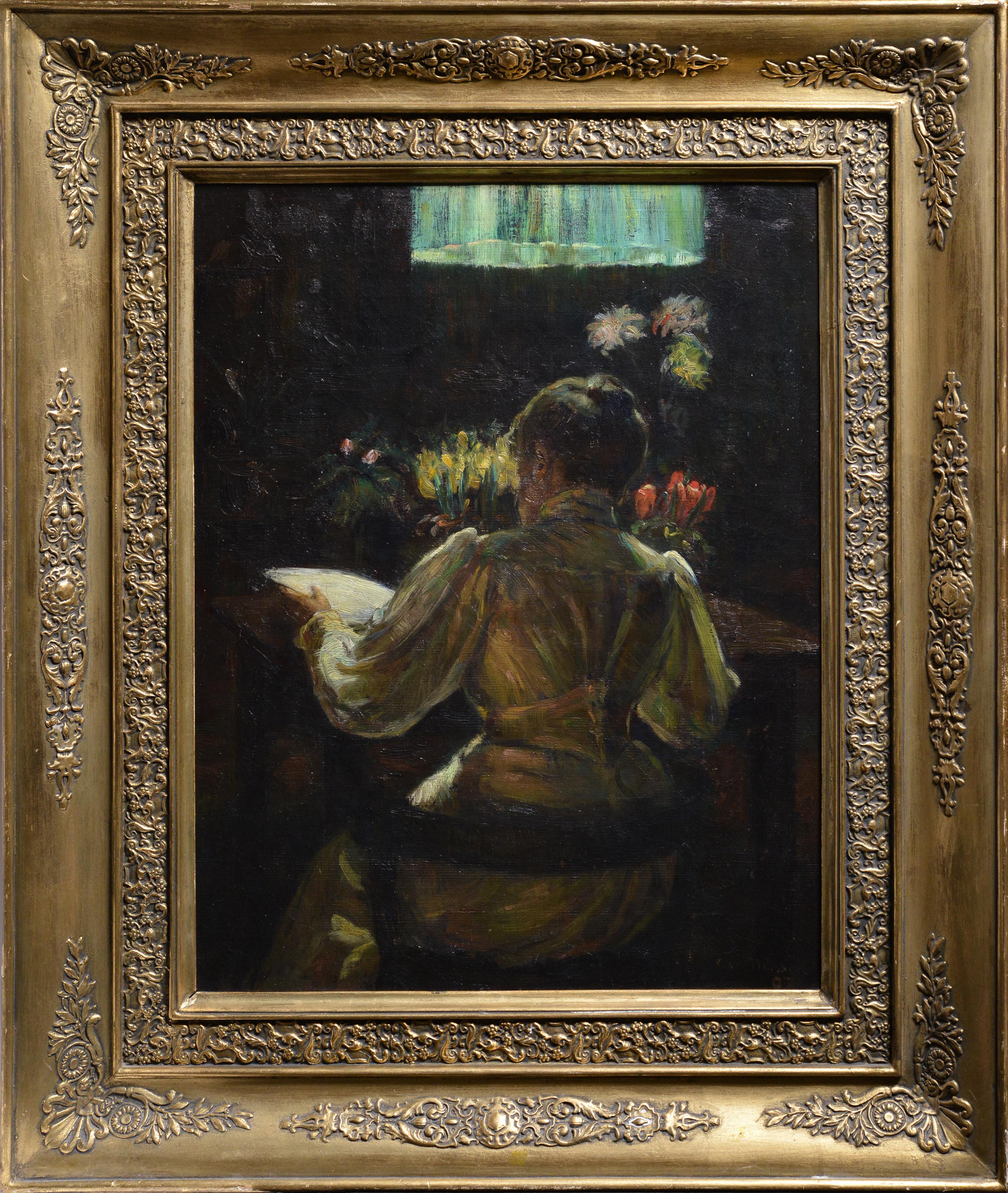


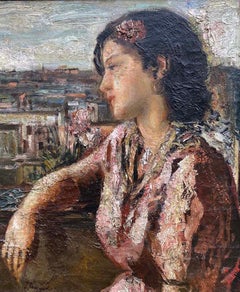
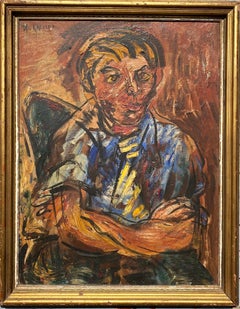
![[Bruce Sargeant (1898-1938)] Man from Below](https://a.1stdibscdn.com/mark-beard-paintings-bruce-sargeant-1898-1938-man-from-below-for-sale/a_9323/a_28835811527269100919/Sargeant_Man_From_Below_980_master.jpg?width=240)
